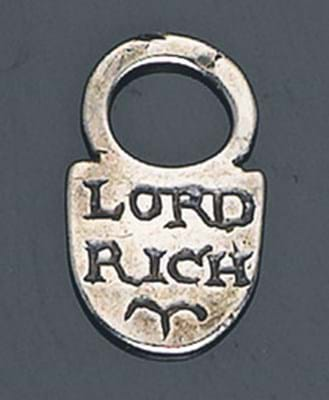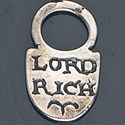It was passed down through the family, who did not realise the importance of what they had until they saw a TV programme on Henry VIII mentioning Lord Rich. Putting two and two together, they took it to a local museum, and then decided to consign it to the sale of silver and objects of vertu at Bonhams in London on July 4.
The tag turned out to be a varvel, a falconer's term for the rings used up until the end of the 19th century. They would be engraved with the owner's coat of arms or address and hung at the end of a leather strap attached to the bird's leg to identify them.
This example dated to c.1550 and the owner was confirmed as Richard Rich (1496-1567), a powerful, oppressive, notoriously unpopular lawyer for Henry VIII who was knighted and appointed Solicitor-General in 1553.
His first devious act was giving evidence leading to the execution of two of his friends, Sir Thomas More and Bishop Fisher. He was instrumental in carrying out the dissolution of the monasteries and his share of the spoils included 100 manor houses in Essex and Leez (Leighs) Priory where he built a house echoing the style and opulence of Hampton Court Palace.
Rich prosecuted Thomas Cromwell, Henry VIII's chief minister, who was executed in 1540. He was also an executor of the king's will and was controversially made Baron Rich of Leez in 1548.
He became Lord Chancellor during Edward VI's reign and was instrumental in prosecuting numerous bishops who came under attack during Bloody Mary's reign. This helped him earn the title of the "16th century's worst Briton" in 2006 from BBC History Magazine.
Rich's property in Essex explains how an Ingatestone farmer could turn up one of his belongings 400 years after his death.
Bonhams' Rupert Slingsby had never sold a varvel and had only seen two others in his 14 years as an specialist. They were often produced in brass but very rarely in silver, testament to the importance of the owner.
It attracted interest from collectors of unusual silver and dealers, but ultimately flew into the hands of the London trade at a double-estimate £2700.
The buyer's premium was 20/12%.
By Stephanie Harris
That’s Rich, coming from you
In the 1950s, a farmer in Ingatestone, Essex found a tiny silver tag measuring just 3/4in (1.8cm) long on his farm. Shaped like a shield with a ring, one side was engraved LORD RICH above a stylised bird and the other featured a family crest.








